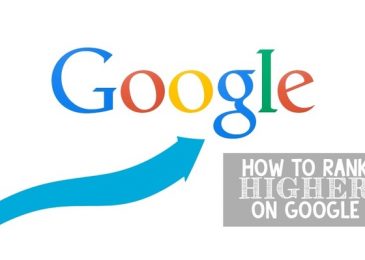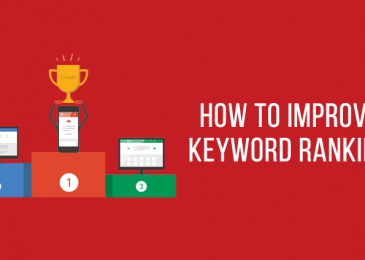In today’s digital landscape, a cohesive marketing strategy is crucial for achieving optimal results. SEO is a key component of digital marketing, but its effectiveness is greatly enhanced when integrated with other marketing efforts. By aligning SEO with your overall digital marketing strategy, you can ensure that all aspects of your marketing work together harmoniously to achieve your business goals. Here’s how to integrate SEO with your broader digital marketing efforts for a unified and impactful approach.
1. Align SEO Goals with Business Objectives
a. Define Clear Objectives
- Understand Business Goals: Ensure that your SEO goals align with your overarching business objectives, such as increasing revenue, expanding market reach, or improving brand awareness.
- Set Specific KPIs: Establish key performance indicators (KPIs) that reflect both SEO and business goals, such as organic traffic growth, lead generation, and conversion rates.
b. Collaborate Across Teams
- Marketing and Sales Alignment: Work closely with marketing and sales teams to understand their needs and align SEO efforts with their campaigns and strategies.
- Share Insights: Provide insights from SEO analytics to inform other teams about user behavior, popular search queries, and content performance.
2. Integrate SEO with Content Marketing
a. Develop a Content Strategy
- Keyword Research: Use SEO insights to guide content creation by identifying high-value keywords and topics that resonate with your target audience.
- Content Calendar: Create a content calendar that integrates SEO-optimized content with your broader content marketing efforts, including blog posts, infographics, and videos.
b. Optimize Content for Search Engines
- On-Page SEO: Ensure that your content is optimized for on-page SEO elements such as meta titles, descriptions, headers, and internal linking.
- Content Formats: Utilize various content formats (e.g., articles, videos, infographics) and optimize them for SEO to enhance visibility and engagement.
3. Leverage SEO Insights for Social Media Marketing
a. Enhance Social Media Strategy
- Keyword Integration: Use SEO keyword research to inform your social media content, ensuring that your posts include relevant terms and phrases that align with search trends.
- Engage with Trends: Monitor SEO trends and incorporate them into your social media campaigns to stay relevant and capture user interest.
b. Cross-Promote Content
- Share Optimized Content: Promote SEO-optimized content on social media platforms to drive traffic and increase visibility.
- Encourage Engagement: Use social media to engage with your audience, gather feedback, and promote user-generated content that supports your SEO efforts.
4. Synchronize SEO with Paid Advertising
a. Integrate SEO and PPC
- Keyword Strategy: Align your SEO keyword strategy with your pay-per-click (PPC) campaigns to ensure consistency in targeting and messaging.
- Ad Copy and Landing Pages: Optimize ad copy and landing pages for both SEO and PPC to improve relevance and performance.
b. Analyze and Adjust
- Performance Tracking: Monitor the performance of both SEO and PPC campaigns to identify opportunities for optimization and adjust strategies as needed.
- Budget Allocation: Use insights from SEO performance to inform budget decisions for PPC campaigns and vice versa.

5. Combine SEO with Email Marketing
a. Optimize Email Content
- SEO Keywords: Integrate relevant keywords into email subject lines, body content, and calls-to-action (CTAs) to enhance visibility and engagement.
- Content Personalization: Use insights from SEO data to personalize email content based on user behavior and preferences.
b. Track and Measure
- Performance Metrics: Track the performance of email campaigns, including open rates, click-through rates, and conversions, to evaluate the impact of SEO-optimized content.
- Adjust Strategies: Use data from email campaigns to refine your SEO strategy and ensure alignment with overall marketing goals.
6. Enhance SEO with Link Building and PR
a. Build High-Quality Backlinks
- PR and Outreach: Use public relations efforts and outreach to build high-quality backlinks from authoritative sources that support your SEO objectives.
- Collaborative Content: Collaborate with industry influencers and media outlets to create content that generates valuable backlinks and enhances your online presence.
b. Monitor and Analyze
- Track Backlink Quality: Use SEO tools to monitor the quality and relevance of your backlinks and address any issues that may impact your SEO performance.
- Evaluate PR Impact: Assess the impact of PR campaigns on SEO metrics, such as domain authority and organic traffic, to measure effectiveness.
7. Use Analytics to Inform Strategy
a. Monitor SEO Performance
- Analytics Tools: Use tools like Google Analytics and Google Search Console to track SEO performance, including traffic sources, keyword rankings, and user behavior.
- Data-Driven Decisions: Leverage data from SEO performance to make informed decisions about content, social media, PPC, and other marketing efforts.
b. Regular Reporting
- Unified Reports: Create comprehensive reports that integrate SEO data with other marketing metrics to provide a holistic view of performance.
- Actionable Insights: Use insights from reports to adjust and optimize your marketing strategies for better alignment and results.
Wrapping it up
Integrating SEO with your overall digital marketing strategy involves aligning goals, optimizing content, leveraging insights, and collaborating across teams. By ensuring that SEO efforts are cohesive with content marketing, social media, paid advertising, email marketing, and public relations, you can achieve a unified approach that maximizes impact and drives better results. Regular monitoring, data analysis, and strategic adjustments will help you maintain a strong digital presence and effectively reach your audience.




